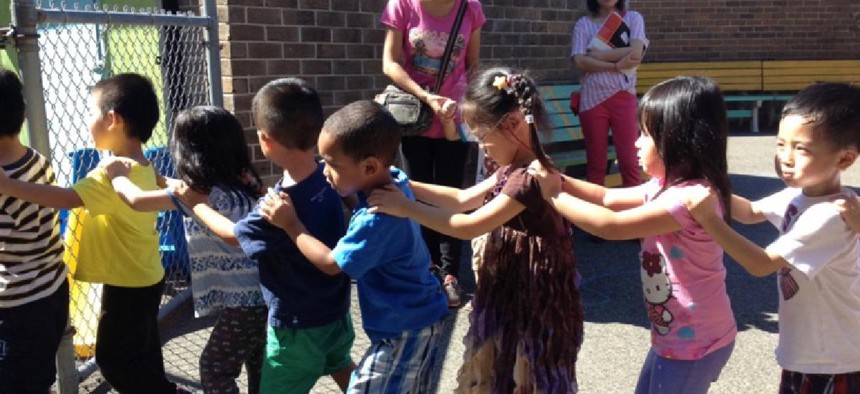If anyone should know how well the city’s massive pre-K expansion is working, it’s parents.
And according to a city-commissioned survey of 1,100 parents released Wednesday, the vast majority say it’s working well: 63 percent of the parents rated their child’s free public pre-kindergarten program as “excellent,” and 29 percent called it “good.”
Of course, that’s not the only measure of Mayor Bill de Blasio’s signature education initiative. Previously, researchers have looked at the quality of certain pre-K sites and found that most were on par with national standards.
Still, the surveys shed some light on how the program is playing out for the 68,500 children enrolled in it, according to the people who know them best.
Here are five key findings:
1. Parents say pre-K is having an effect on their children’s learning and behavior.
The full-day program for four-year-olds is preparing students for kindergarten, according to the survey.
More than 80 percent of parents said the experience has improved their child’s learning “a lot.” They cited progress in children’s reading and writing, vocabulary development, and number recognition, and said that options other than pre-K, such as care by a family member during the day, would not have left their children as ready for kindergarten.
A little over half of respondents claimed that attending pre-K has also improved their child’s behavior “a lot.” Parents said their children are now better able to share, follow rules, and adhere to routines.
2. The economic effects have been real for some parents.
Free full-day pre-K isn’t just helping students — it’s also been a boon to working parents, sparing them from having to pay for childcare or reduce their work hours, the survey shows.
At least half of the surveyed parents reported that, if full-day pre-K was unavailable, part of their solution would have been to pay for childcare or watch their child at home. Forty-one percent said they would likely have worked fewer hours.
3. The city’s efforts to help parents choose and apply to a program paid off …
The city hired tons of staffers to track down the parents of four-year-olds and walk them through the application process. It also created a new system that allows parents to use a single application for pre-K programs at public schools and community centers.
The efforts seemed to reach a large swatch of parents: About a third of respondents said they got help from the city in selecting or enrolling their child. And almost all parents said it was easy or very easy for them to apply.
4. … but family and community connections mattered, too.
Most parents surveyed selected their child’s pre-K program because they heard about it from a family member or friend.
A quarter of parents said they chose a program because their child already attended the school where it was based, while one-third had another child or relative that attended the school.
5. Pre-K has sparked some new learning at home.
The program has inspired some parents to play a stronger role in their children’s learning at home, according to the survey.
Over half of parents said they regularly received materials with tips about how to work with their children at home. Of those parents, about 80 percent reported that they have tried some of the suggested activities at least once, and almost all of these parents deemed the activities effective in helping with their children’s behavior or learning.
This article was first published on Chalkbeat New York on March 2.


